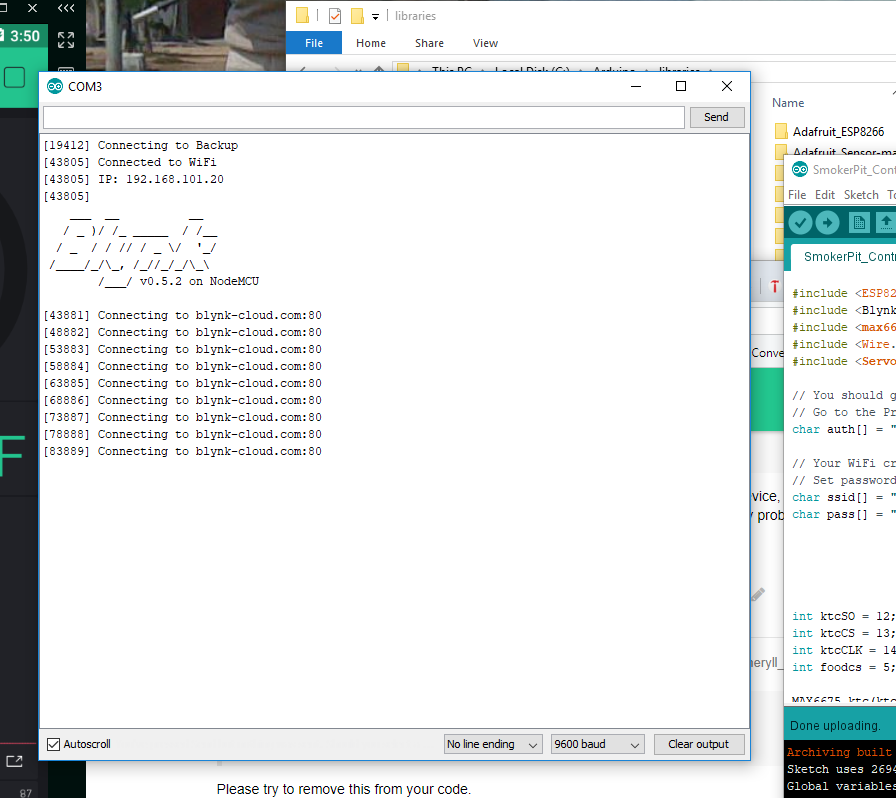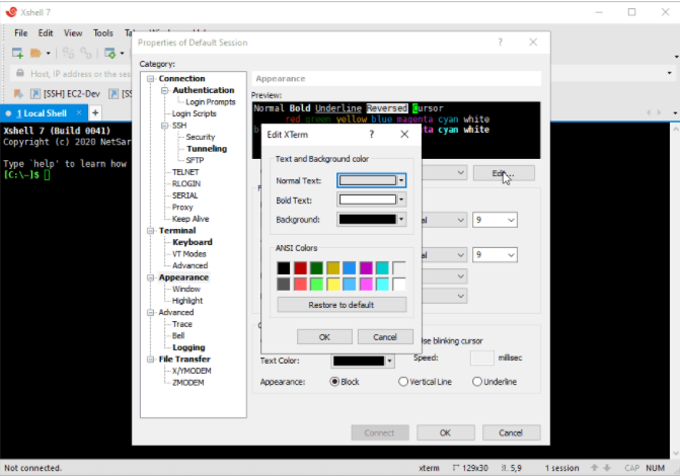Table of Contents
- Why Connecting to Your Smart Devices Matters
- What Exactly is SSH and Why Does it Help with SSH IoT Device?
- How Do You Connect to Your SSH IoT Device?
- Are There Smart Ways to Keep Your SSH IoT Device Safe?
- Why is Raspberry Pi Often Mentioned for SSH IoT Device Connections?
- What Happens When You Need More Than Just Basic SSH IoT Device Access?
- Can Proxy Tunnels Make SSH IoT Device Access Even Easier?
- How Do You Pick the Right Tools for Your SSH IoT Device Setup?
Have you ever thought about how all your smart gadgets, from the thermostat that keeps your home cozy to those tiny sensors out in a field, actually talk to each other and to you? It's pretty amazing, really, how many bits of equipment are now linked up, making our lives a bit smoother. Sometimes, though, you need to get right inside one of these clever little machines, maybe to fix something, change a setting, or just check on its well-being without having to walk over to it. That's where a handy method for remote access comes into play.
It's a common situation, you know, when a smart home item acts up, or a sensor needs a quick look, and you're nowhere near it. Perhaps you're miles away, or it's tucked away in a hard-to-reach spot. Being able to connect directly to these pieces of equipment from a distance, to poke around and make things right, is a very useful skill to have. This ability to reach out and touch your devices, so to speak, is what we're going to talk about here. It helps you keep things running smoothly, no matter where you are.
This way of getting in touch with your internet-connected gadgets gives you full say over them, and it makes sorting out problems a simple task. You can get to all their functions and adjust their setups without much fuss. So, if you're curious about keeping a watchful eye on your smart devices or even managing them from afar, this particular method of connection is a very good choice. It helps you keep things secure and keeps you in charge, which is pretty neat, actually.
What Exactly is SSH and Why Does it Help with SSH IoT Device?
Secure Shell, or SSH as most folks call it, is a pretty important way to connect to other computer systems, especially when those systems are far away. Think of it like sending a very private, coded message to your smart device. This special kind of connection makes sure that whatever you send or receive stays private and safe from prying eyes. It's a very good way to keep your internet-connected devices, like those little Raspberry Pi computers or other smart home bits, working just as they should, even when you're not standing right next to them. You see, it really makes a difference for managing things from a distance.
For anyone dealing with lots of connected devices, maybe in a home setup or even for bigger jobs in a business, having a safe way to get to them is a must. SSH gives you that safe path. It lets you send commands, change files, or even look at what your device is doing, all through a connection that's built to protect your information. This is particularly helpful for internet-connected things, where you want to make sure no one else can mess with your stuff. So, in some respects, it's like having a secret key that only you can use to get into your digital belongings.
The original information mentions that SSH is "invaluable" and provides a "secure way to manage." This means it's incredibly useful for keeping an eye on your devices and making sure they're doing their job without anyone else getting in the way. It lets you take charge of your smart gadgets, and it does so in a way that keeps everything under wraps. So, you can feel pretty confident that your commands are going straight to your device and nowhere else, which is very comforting.
How Do You Connect to Your SSH IoT Device?
Getting your computer to talk to your internet-connected device using SSH usually starts with a few simple steps. First off, both your main computer and the smart device you want to reach need to be on the same network. Think of it like them both being in the same house, able to call out to each other. If they're not in the same "house," then your smart device needs to be reachable from the wider internet, which can be a bit more involved to set up safely. You know, it's like making sure your front door is locked if you're letting people visit from outside your neighborhood.
To make this connection happen, you'll generally need to put some special software on your internet-connected device. This software is often called an OpenSSH server. It's what listens for your computer trying to connect. On your computer, you'll use a client program, something like PuTTY if you're on a Windows machine, or just the built-in terminal if you're using a Mac or Linux. These tools help you type in the special commands that get you connected. You'll often sign in using a special username, perhaps a "system user," or even better, a very secure "SSH key" that's like a digital fingerprint. This key-based method is generally considered a much safer way to go, by the way.
The original text mentions "standard client tools such as Putty" and that there are "no security holes in other private client tools and protocols." This is good to keep in mind. Sticking with well-known, widely used tools usually means they've been checked over by many people for any weak spots. It's like choosing a well-built lock from a trusted maker; you have more peace of mind. Once you have the right software on both ends, and they're on the same network, you can start sending commands to your internet-connected device from afar, which is pretty cool, actually.
Are There Smart Ways to Keep Your SSH IoT Device Safe?
Keeping your internet-connected devices safe when you're accessing them remotely is super important. It's not just about getting in; it's about making sure only you can get in. One of the best ways to do this, as mentioned, is to use what's called "SSH key-based secure authentication." Instead of just a password, which can sometimes be guessed, an SSH key is a pair of very long, complex digital codes. You keep one part secret on your computer, and the other part goes on your smart device. They fit together perfectly, like a unique lock and key, letting you in without ever sending a password over the network. This makes it much harder for someone to sneak in, you know, because they'd need your exact digital key.
Another good habit is to always use the default system user names sparingly, or change them if you can. Often, smart devices come with common usernames already set up, which can be a bit of a risk. Changing these or creating new ones with very strong, unique passwords (if you're not using keys) adds another layer of protection. Also, making sure your software, both on your computer and your smart device, is kept up to date is a very good idea. Updates often fix security weak spots that bad actors might try to use. So, you're always patching up any potential holes, which is pretty sensible.
The source text points out the need to "follow the security best practices outlined in this article" to "secure your IoT devices, Raspberry Pi and edge computing Linux devices for SSH remote access." This really means being thoughtful about how you set things up. It's about more than just getting connected; it's about building a strong fence around your digital things. Thinking about who needs access, what they need to do, and how to make that access as hard as possible for anyone else to get is a very good starting point. It's like making sure all the windows and doors are locked, not just the front door, which is very important.
Why is Raspberry Pi Often Mentioned for SSH IoT Device Connections?
The Raspberry Pi is a tiny, affordable computer that a lot of people use for all sorts of projects, especially those involving internet-connected devices. It's a very popular choice for setting up SSH connections to smart gadgets, and for good reason. For one, it's quite simple to get SSH working on a Raspberry Pi; the tools you need are often already there or very easy to add. Its small size means it can be tucked away almost anywhere, making it a good brain for many different kinds of smart projects, from home automation to little weather stations. So, it's pretty versatile, actually.
The original text calls the "Raspberry Pi 4" one of the "most popular choices for SSH IoT applications." This little computer is powerful enough to handle the tasks you'd typically throw at an internet-connected device, and it's got a very active community of users who share tips and help each other out. This means if you run into a snag trying to get your SSH connection going, there's usually plenty of help available online. It's like having a big group of friends who know a lot about these tiny computers, which is very helpful.
Because it's so widely used and well-supported, setting up remote SSH on a Raspberry Pi is often seen as a good starting point for learning about managing internet-connected devices from afar. You can experiment with different settings, try out security practices, and get a real feel for how these remote connections work without needing expensive equipment. So, it's a bit like a training ground for anyone wanting to get better at handling their smart devices, which is pretty neat.
What Happens When You Need More Than Just Basic SSH IoT Device Access?
While a straightforward SSH connection is great for many tasks, there are times when your needs for managing internet-connected devices might grow a bit. For instance, if you're running a small business with many smart sensors or devices spread out, simply using SSH for each one can become a bit much to handle. You might find yourself needing a way to manage them all from a central spot, perhaps even updating their software or checking their health in groups, rather than one by one. This is where more advanced solutions come into play, you know, when you need to scale up your operations.
The original text mentions that "SMBs outgrow it fast" and suggests looking for "smarter, scalable alternatives for IT admins." This points to the idea that as your collection of internet-connected devices grows, you might need tools that can handle more complex situations. These could be platforms that let you see all your devices on a map, or that automatically alert you if something goes wrong, or even let you push out new settings to hundreds of devices at once. It's about moving from managing individual devices to managing a whole fleet of them, which is a different kind of challenge altogether.
These bigger, more comprehensive systems often build on the secure principles of SSH but add layers of management and automation on top. They might use things like "device streams" or "proxy applications" to make connections even smoother and more reliable, especially if your devices are behind a tricky network setup, like a firewall. So, while SSH is the foundation, these other tools help you build a much bigger and more efficient structure for keeping your internet-connected devices running smoothly, which is very practical.
Can Proxy Tunnels Make SSH IoT Device Access Even Easier?
Sometimes, your internet-connected device might be tucked away behind a network firewall or a "NAT router," which can make it tricky to connect to directly from the internet. Think of it like trying to call someone who lives in an apartment building with a very strict security guard at the front door. A "reverse proxy tunnel" or "device stream" can act like a special messenger service that gets your call through. It creates a secure path from your device out to a central point, and then from that central point back to your computer. This means you don't have to open up holes in your network's defenses, which is a much safer way to do things, you know, like having a secret passage rather than leaving the front door wide open.
The original information talks about "secure SSH reverse proxy tunnels" and how "SocketXP provides SSH based reverse proxy tunnels to remotely access and control Raspberry Pi and IoT devices behind NAT router or firewall." It also mentions an "IoT Hub streaming endpoint" that "mediates device streams, acting as a proxy." These systems are designed to make remote access much simpler, even for devices that are otherwise hard to reach. They essentially create a bridge over those network barriers, allowing your commands to get to your internet-connected device and its responses to get back to you, all while keeping things very secure. It's pretty clever, actually, how they manage to do this.
Using these kinds of tunnels or streams means you can manage your internet-connected devices from anywhere, without having to change complicated network settings or put your devices at risk by exposing them directly to the internet. This is especially useful for devices that are deployed in different locations or in places where you don't have full control over the local network. So, in some respects, it gives you a lot more freedom and flexibility when it comes to keeping an eye on your smart gadgets, which is very helpful.
How Do You Pick the Right Tools for Your SSH IoT Device Setup?
When it comes to picking the right tools for connecting to your internet-connected devices using SSH, there's no single answer that fits everyone. What works best for you really depends on what you're trying to do and how many devices you have. If you're just starting out with one or two smart gadgets, a simple SSH client on your computer and OpenSSH on your device might be all you need. But if you're looking after a whole bunch of devices, or if they're in tricky network spots, you might need something more advanced. You know, it's like choosing a car; a small one is fine for errands, but a bigger one is better for moving lots of stuff.
The original text mentions "comparison of popular IoT SSH servers" and that "selecting the right ssh remote access tool depends on your IoT deployment." This suggests that you should think about your specific situation. Are your devices all in one place, or are they spread out? Do you need to connect to them often, or just every now and then? Do you need to automate tasks, or will you be doing everything by hand? Answering these kinds of questions can help guide you toward the best choice. Some tools might be great for beginners, while others offer more features for experienced users, which is pretty typical.
Ultimately, the goal is to find a solution that lets you securely connect to your internet-connected devices with ease, giving you the control you need without adding unnecessary fuss. Whether it's a basic setup with standard tools or a more sophisticated platform that handles many devices at once, the key is to ensure your connection is safe and reliable. So, take a moment to think about what you truly need, and then explore the options that make the most sense for your particular smart device setup. It's about finding what fits you best, actually.
Related Resources:



Detail Author:
- Name : Prof. Zetta Witting I
- Username : gretchen.mcglynn
- Email : lokuneva@senger.biz
- Birthdate : 1983-04-25
- Address : 251 Wilderman Mews New Shana, MA 16392-1601
- Phone : 714-351-4504
- Company : Carter, Goyette and Wiegand
- Job : Irradiated-Fuel Handler
- Bio : Iusto sit unde error qui sit rerum perferendis qui. Ut fuga eos eius. Autem cum aut voluptatem. Rem molestias ut eaque libero.
Socials
facebook:
- url : https://facebook.com/hermannl
- username : hermannl
- bio : Tempore earum sit accusantium dolore accusantium itaque.
- followers : 5209
- following : 1498
linkedin:
- url : https://linkedin.com/in/lunahermann
- username : lunahermann
- bio : Nulla et repellendus suscipit et.
- followers : 5310
- following : 2975
instagram:
- url : https://instagram.com/luna_dev
- username : luna_dev
- bio : Sunt sed consectetur maiores odit ab ut et molestiae. Aut est beatae in incidunt quam.
- followers : 6880
- following : 186